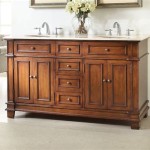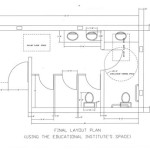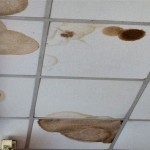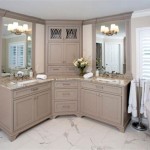How to Unblock Bathroom Pipes: A Comprehensive Guide
Bathroom pipes are susceptible to blockages due to the variety of materials that routinely pass through them. Hair, soap scum, toothpaste, and small objects can accumulate over time, leading to slow drainage or complete blockage. Addressing these issues promptly and effectively is essential to prevent further complications like leaks, pipe damage, and unsanitary conditions. This article provides a detailed guide to unblocking bathroom pipes, outlining various methods ranging from simple DIY techniques to more advanced plumbing solutions.
Identifying the Cause and Location of the Blockage
Before attempting to unblock a pipe, it is crucial to identify the likely cause and general location of the obstruction. This preliminary assessment can help determine the most appropriate method for clearing the blockage and prevent unnecessary effort or potential damage. Common causes of bathroom pipe blockages include:
- Hair: Hair is a primary culprit, often binding with soap scum and other debris to form stubborn clogs.
- Soap Scum: Residue from soaps and shampoos accumulates in pipes, gradually reducing water flow.
- Toothpaste: Though seemingly innocuous, toothpaste can solidify over time, contributing to blockages.
- Personal Care Products: Cotton swabs, makeup wipes, and other personal hygiene items should never be flushed down the toilet or drain, as they do not easily break down and can cause significant obstructions.
- Mineral Buildup: In areas with hard water, mineral deposits can accumulate inside pipes, narrowing the passageway and leading to blockages.
Determining the location of the blockage can be achieved by observing which fixtures are affected. If only one sink is draining slowly, the blockage is likely located within the drainpipe beneath that sink. If multiple fixtures, such as the sink, shower, and toilet, exhibit slow drainage or backups, the blockage is likely located further down the main drain line.
DIY Methods for Unblocking Bathroom Pipes
Several DIY methods can effectively clear minor to moderate blockages in bathroom pipes. These techniques typically involve readily available tools and household products, making them a cost-effective first line of defense against drain problems.
1. Boiling Water:
Boiling water is a simple yet effective method for dissolving soap scum and loosening other types of minor blockages. To use this method, carefully pour a kettle or pot of boiling water directly down the affected drain. Exercise caution when handling boiling water to avoid burns. This method is most effective for grease and soap-based blockages. However, it's crucial to ensure that the pipes are made of materials that can withstand high temperatures. Avoid using boiling water on PVC pipes, as they can soften or warp under extreme heat. For older plumbing systems, it's advisable to run hot tap water for a few minutes before pouring boiling water to preheat the pipes and prevent cracking.
2. Plunger:
A plunger is a standard plumbing tool that uses suction and pressure to dislodge blockages. Ensure there is enough water in the sink or tub to cover the cup of the plunger. Create a tight seal around the drain opening with the plunger cup. Vigorously plunge up and down for several minutes, maintaining the seal. Remove the plunger and check if the water drains freely. Repeat the process if necessary. There are two main types of plungers: cup plungers, which are best suited for flat surfaces like sinks and bathtubs, and flange plungers, which have a soft rubber flap that folds out to create a better seal around toilet drain openings. Using the appropriate type of plunger can significantly improve its effectiveness.
3. Baking Soda and Vinegar:
A mixture of baking soda and vinegar creates a chemical reaction that can break down many types of blockages. Pour one cup of baking soda down the drain, followed by one cup of vinegar. Let the mixture fizz for 30 minutes. Then, flush the drain with hot water. The chemical reaction produces carbon dioxide gas, which helps to dislodge debris. The bubbling action also helps to clean the pipe walls. For stubborn blockages, the process can be repeated, or the mixture can be left to sit overnight before flushing with hot water.
4. Wire Hanger or Drain Snake:
A straightened wire hanger or a drain snake can be used to manually remove blockages lodged closer to the drain opening. Carefully insert the wire hanger or drain snake into the drain, twisting and maneuvering it to break up or pull out the blockage. Be cautious not to push the blockage further down the pipe. A drain snake, also known as a plumbing snake or auger, is a flexible tool specifically designed for reaching deeper into pipes and clearing obstructions. It typically consists of a long, flexible metal cable with a corkscrew-like tip that can grab onto and pull out debris. When using a drain snake, it's important to wear gloves to protect hands from dirt and bacteria. After removing the blockage, flush the drain with plenty of water to ensure it's clear.
5. Wet/Dry Vacuum:
A wet/dry vacuum can sometimes be used to suck out blockages that are not too far down the drain. Set the vacuum to the liquid setting and cover the overflow drain to create a tight seal. Place the vacuum hose over the drain opening and turn on the vacuum. The suction may be enough to pull out the blockage. This method works best for loose debris such as hair or small objects. Before using a wet/dry vacuum, it's essential to ensure that the vacuum is specifically designed for handling liquids. Attempting to vacuum liquids with a standard vacuum cleaner can damage the motor and create a safety hazard.
Advanced Plumbing Solutions for Stubborn Blockages
If DIY methods prove ineffective, more advanced plumbing solutions may be necessary. These techniques often require specialized tools and a greater understanding of plumbing systems.
1. Disassembling the P-Trap:
The P-trap is a U-shaped section of pipe located under the sink that is designed to trap debris and prevent sewer gases from entering the home. Over time, the P-trap can accumulate significant amounts of debris, leading to blockages. To disassemble the P-trap, place a bucket underneath to catch any water or debris. Loosen the slip nuts that connect the P-trap to the drainpipes. Carefully remove the P-trap and clean out any accumulated debris with a wire brush or other suitable tool. Reassemble the P-trap, ensuring that the slip nuts are tightened securely but not overtightened. Periodically cleaning the P-trap can help prevent future blockages. Before disassembling the P-trap, it's advisable to turn off the water supply to the sink to prevent accidental flooding.
2. Chemical Drain Cleaners:
Chemical drain cleaners contain strong chemicals that can dissolve many types of blockages. However, they should be used with caution, as they can damage pipes, especially older ones, and pose a health risk if not handled properly. Always follow the manufacturer's instructions carefully. Wear gloves and eye protection when using chemical drain cleaners. Avoid mixing different types of drain cleaners, as this can create dangerous fumes. Chemical drain cleaners should be considered a last resort after other methods have failed. Prolonged or frequent use of chemical drain cleaners can corrode pipes and lead to leaks. If chemical drain cleaners are used, it's essential to ventilate the area well and avoid breathing in the fumes.
3. Using a Power Auger (Electric Drain Snake):
A power auger, also known as an electric drain snake, is a motorized tool that can reach further into pipes and clear more stubborn blockages than a manual drain snake. Power augers are typically used by professional plumbers but can be rented for DIY projects. When using a power auger, it's crucial to follow the manufacturer's instructions carefully. Wear gloves and eye protection. Feed the auger cable into the drain, rotating it to break up or pull out the blockage. Be careful not to damage the pipes with the auger. Power augers can be powerful tools, and it's essential to exercise caution when using them to avoid injury or damage to the plumbing system. Before using a power auger, it's advisable to inspect the pipes for any signs of damage or corrosion.
4. Hydro Jetting:
Hydro jetting is a professional plumbing technique that uses high-pressure water to blast away blockages and clean pipe walls. This method is particularly effective for removing grease, mineral buildup, and other stubborn debris. Hydro jetting requires specialized equipment and is typically performed by a licensed plumber. While highly effective, hydro jetting can be expensive and may not be necessary for minor blockages. Hydro jetting is best suited for situations where other methods have failed or for preventive maintenance to keep pipes clean and clear.
Preventive Measures to Avoid Future Blockages
Preventing blockages is always preferable to dealing with them after they occur. Implementing the following preventive measures can significantly reduce the likelihood of bathroom pipe problems.
1. Install Drain Screens:
Drain screens are inexpensive and effective at catching hair and other debris before they enter the drainpipe. Place drain screens over all sink and shower drains to prevent solid materials from entering the plumbing system. Regularly clean the drain screens to remove accumulated debris. Drain screens are available in various sizes and materials to fit different types of drains. Choosing the right type of drain screen can maximize its effectiveness.
2. Avoid Flushing Inappropriate Items:
Only toilet paper should be flushed down the toilet. Avoid flushing items such as cotton swabs, makeup wipes, feminine hygiene products, and paper towels, as these items do not easily break down and can cause significant blockages. Dispose of these items in a trash can. Educating all household members about proper flushing etiquette can help prevent blockages. Consider placing a sign in the bathroom as a reminder.
3. Regularly Flush Drains with Hot Water:
Periodically flushing drains with hot water can help to dissolve soap scum and prevent the buildup of other debris. Run hot water down the drain for several minutes each week to keep the pipes clear. This simple practice can significantly reduce the risk of blockages. In areas with hard water, consider using a water softener to prevent mineral buildup in pipes.
4. Use Enzyme-Based Drain Cleaners:
Enzyme-based drain cleaners use natural enzymes to break down organic matter, such as hair and soap scum. These cleaners are less harsh on pipes than chemical drain cleaners and can be used regularly to prevent blockages. Follow the manufacturer's instructions carefully when using enzyme-based drain cleaners. Enzyme-based drain cleaners are a more environmentally friendly alternative to chemical drain cleaners. They are also generally safer for pipes and plumbing systems.
5. Professional Plumbing Inspection and Maintenance:
Scheduling regular plumbing inspections and maintenance can help to identify potential problems before they become serious. A professional plumber can inspect the pipes, identify areas of concern, and provide recommendations for preventive maintenance. Regular plumbing inspections can also help to detect leaks and other plumbing issues that may not be immediately apparent. Investing in professional plumbing maintenance can save money in the long run by preventing costly repairs.
By understanding the causes of bathroom pipe blockages, employing appropriate unblocking methods, and implementing preventive measures, homeowners can effectively maintain their plumbing systems and avoid costly repairs. When in doubt, consulting a licensed plumber is always the best course of action to ensure safe and effective solutions.

How To Unclog A Sink The Right Way

How To Unclog A Bathroom Sink Hana S Happy Home

5 Natural Ways To Unclog A Bathroom Sink Hiller How

How To Clear Blocked Pipes Heating Plumbing B Q

How To Clear A Clogged Drain Reviews By Wirecutter

How To Unclog A Slow Running Bathroom Sink Drain 10 Options

6 Ways To Fix Clogged Drains Keep Pipes Flowing Freely Horizon Services

3 Ways To Clear A Clogged Waste Pipe Wikihow

How To Clear Clogged Drains Diy

How To Unclog A Slow Running Bathroom Sink Drain 10 Options
Related Posts







